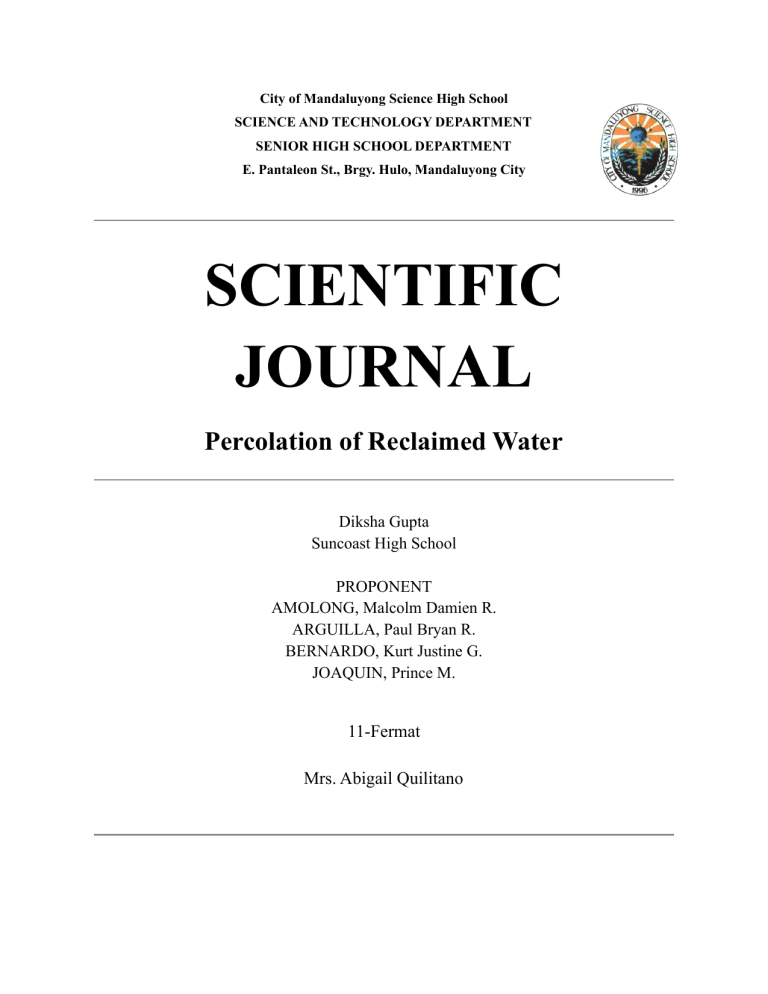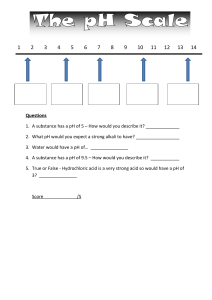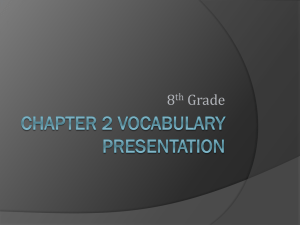
City of Mandaluyong Science High School SCIENCE AND TECHNOLOGY DEPARTMENT SENIOR HIGH SCHOOL DEPARTMENT E. Pantaleon St., Brgy. Hulo, Mandaluyong City SCIENTIFIC JOURNAL Percolation of Reclaimed Water Diksha Gupta Suncoast High School PROPONENT AMOLONG, Malcolm Damien R. ARGUILLA, Paul Bryan R. BERNARDO, Kurt Justine G. JOAQUIN, Prince M. 11-Fermat Mrs. Abigail Quilitano BACKGROUND OF THE STUDY The number of people without access to improved water supply occupies 11% of the world’s population, calling for a necessary, affordable, but sustainable solution to cleaning water and making it drinkable. This experiment is targeted towards finding cheaper and easier ways to clean water at the location itself without having to spend billions of dollars transporting water from other countries, which is both expensive and inefficient. In this experiment, several different, cheap filtering materials were used to test their effectiveness (in total dissolved solids per million, TSS, pH, chlorine levels, total hardness, turbidity, color, and taste/odor) in filtering water. The subsequent data was used to determine the best substance for filtering. This is important because the cheap filtration system would reduce the overall cost of spending money on getting clean water to those who need it, and without having the overbearing costs of constantly transporting millions of gallons of water when the dirty water can be treated right at the spot, only the filters would need to be replaced every 6 months or so. While many filtration substances used in the experiment are used for large-scale water filtration systems, the goal of this experiment is to determine a filtration system made effectively on a small scale, so the water can still be drinkable, without the need for an expensive, large-scale production. RESEARCH OBJECTIVE With this experiment, the goal to achieve here is to gain valuable information about activated carbon, gravel, and polymeric microfiltration membranes as filtering substances in order to determine if they are suitable for water filtration processes without external pumps or chemical purification The study aims to answer these specific questions: - What is the most effective, affordable and suitable filtration substance for water? - Will the filtration substance be enough to reuse water into drinkable water? METHODOLOGY This will be done by testing for indicative measures of safeness (in terms of drinking levels), according to the World Health Organization in activated carbon, gravel, and polymeric microfiltration substances. Thus the question addressed will be what is the most effective, affordable filtration substance for water? The hypothesis is that if contaminated water is treated through a polymeric membrane 3 times, then it will filter out to the most healthy and safe levels of water by having the most TDS, TSS, and total hardness removed. The reason for this research is to eventually be able to create a product, based on the information gathered from this experiment, that will be able to filter on the spot, thus eliminating the need for billions of dollars to be spent on importing clean water to countries from other countries. RESULTS AND FINDINGS The results show that polymeric membrane reduced the TDS (total dissolved solids), TSS (total suspended solids), turbidity (measure of how clear the water is or how many light particles can pass through)and total hardness (amount of minerals and metals present in substance) levels the most, thus supporting the hypothesis that contaminated water treated through the polymeric membrane will be the most effective at filtering. The second most effective was the activated carbon with slightly less effectiveness, and gravel was the least effective of them all, yet still somewhat effective at filtering out solids and some smaller particles nonetheless. None of them affected the chlorine levels significantly. An interesting bit is that all methods of filtration managed to get the pH of the water down to safe, drinkable levels, as outlined by the World HealthOrganization. They also were able to get the TDS, TSS, and pH down to safe drinking levels as well, likely due to the compactness of the design and the fact that the substances were able to capture almost all of the actual solid particles, only allowing for smaller particles to go through. The turbidity and total hardness did not decrease down to safe levels in any of the three substances, but that can likely be explained by the fact no nanoparticle membrane filter or substance was used to filter particulates that small. Bacteria and viruses were also not measured in this experiment, but it is likely they would not have filtered out as well due their size being less than 200 nanometers, something none of the filtering substances were capable of filtering CONCLUSION The results of this experiment look promising in answering the research question and the results support the hypothesis made initially as the polymeric membrane did reduce the TDS, TSS, turbidity, and total hardness the most compared to the gravel and activated carbon. The activated carbon was the second-most effective and the gravel was the least effective of the three. Compared to other research done on this topic, the data seems to correlate well because a lot of research studies have shown that the polymeric membrane is better at rejecting particulates that do not belong, than compared to activated carbon. Yet these results have to be taken with the understanding that many researches have been conducted with different designs, using a different a number and amount of components to carry out the experiments, thus results have understandably varied in terms of which substances were most affected. The results overall were very promising because all of the World Health Organization’s drinking water standards were met for the TDS, pH, and chlorine on all the substances, but it was not met for the turbidity and total hardness of the water. This makes it clear that while the water may not be drinkable yet, most of the guideline have been met and that further research and studying into smaller, nanoparticle membranes and chemically erosive substances such as chlorine can show promising results in the turbidity and total hardness, as well as bacteria and virus levels. Once the individual substances are all studied thoroughly, several prototypes can be made with a different combination of filtration systems based on the results from the individual substances to make the most effective filtration system. No odd results were found while carrying out the experiment as they all seemed to be relatively close with each other, and seemed to generally match data collected from previously collected experiments. It is likely that the results recorded would not have been completely accurate as sometimes the measuring instruments might not have been cleaned in between use, due to forgetfulness. The dirtiness of the water could have affected how the instruments worked. The filtering substances were also cleaned, if possible, in between use, but it is very likely they were not completely cleaned, thus leaving a bit of debris behind and affecting filtering results. If the project had to be redone, instead of the variables being one single filtering substance, the experiment would have been set up with an array of different combinations with the substances, thus creating, essentially mini-prototype versions of entire filtering systems that would have fit inside of a jug, thus recreating the purpose of the project, to work towards an affordable, portable, and efficient filtration system that could filter water to drinkable levels. While still testing for the single variables, with more time, subsequent filtration systems could have been tested with the knowledge of what the most effective substance is and which one is the least. More data would have been accounted for as well such as bacteria and viruses present and more filtering substances would have been tested such as nano-particle filtration membranes, to see if it could filter out bacteria and viruses that slip past all other filtering substances as the pore sizes are too big.






